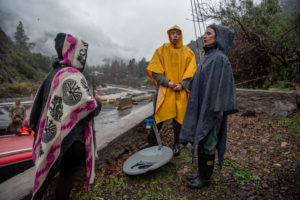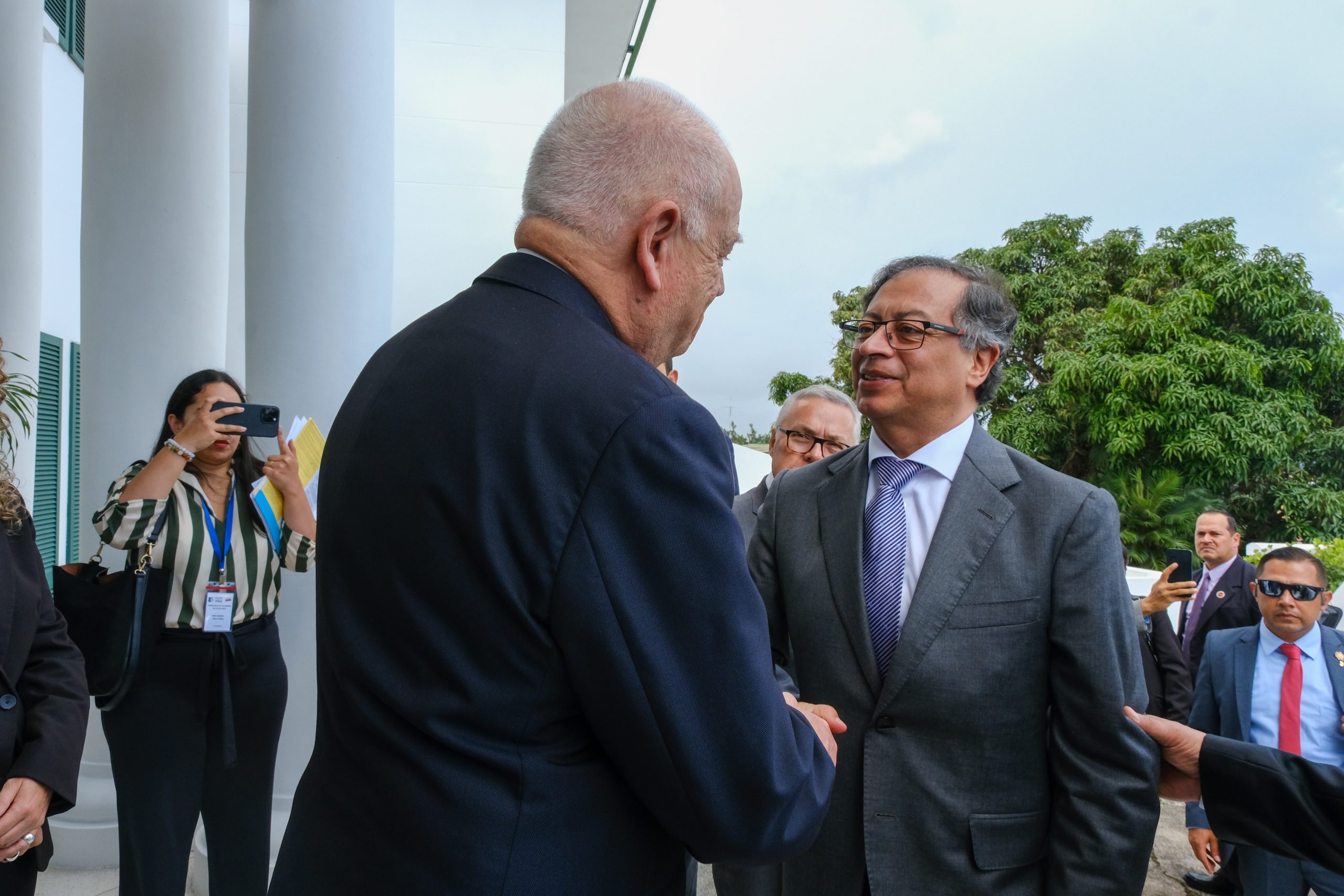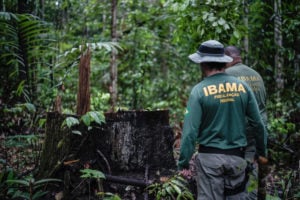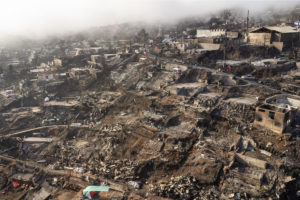The Inter-American Court of Human Rights is currently deliberating over an advisory opinion that could clarify states’ legal responsibilities to tackle climate change, and how this connects with their human rights duties.
Once released, the court’s opinion could compel Latin American and Caribbean states that recognise its jurisdiction to cut greenhouse gas emissions, support climate change adaptation measures, and help establish mechanisms to address the resulting loss and damage.
The process began after a formal request lodged last year by Colombia and Chile – whose governments have sought to position themselves as leaders on environmental action in Latin America – and supported by the Centre for Justice and International Law (CEJIL), a human rights NGO.
Aware of the green pledges of the countries’ new presidents, Gustavo Petro and Gabriel Boric, as well as existing cooperation on energy and cultural matters, CEJIL was keen to encourage them to do more to tackle the climate emergency.
Florencia Reggiardo, the organisation’s director for the Andean region, North America and the Caribbean, says there has been a disconnect between climate change and human rights issues, and that they saw an opportunity to deepen understanding of the links. “We played a key role,” she says. “We built a proposal and discussed how they could present it.”
CEJIL’s work came to fruition in January 2023, when Chile and Colombia sent their request to the Inter-American Court of Human Rights. It called on the court to investigate states’ responsibilities and produce an advisory opinion on many issues linking climate change and human rights. For example, the rights of children, women and environmental defenders, as well as “common but differentiated responsibilities” – the idea that all countries have a role to play in tackling climate change, but some should bear a bigger burden.
The Inter-American Court and climate
The Inter-American Court of Human Rights was set up in 1979 and is based in Costa Rica. Its founding purpose is to interpret and apply the American Convention on Human Rights, a treaty ratified by members of the Organization of American States. Twenty states have since accepted its jurisdiction.
Advisory opinions are not in themselves legally binding, but they are highly influential. The Inter-American Court has produced a number of these documents in the past on important issues ranging from freedom of expression to asylum and the death penalty. In 2017, Colombia asked the court to consider the risks posed to the marine environment by development projects in the Wider Caribbean Region.
Although climate change affects the whole world, Chile and Colombia’s request letter notes that these impacts are not experienced uniformly or fairly. It states that people in both countries already deal with the daily consequences of the climate emergency, including droughts, floods, landslides and fires. “These phenomena highlight the need to respond urgently and based on the principles of equity, justice, cooperation and sustainability, with a focus on human rights,” it reads.
The Inter-American Court’s current deliberation marks the third international court tasked with providing such an opinion related to climate change, alongside the International Court of Justice (ICJ) and the International Tribunal for the Law of the Sea (ITLOS) – but it is taking a different approach.
For a start, it is the only international human rights court looking at this issue, says Dr Maria Antonia Tigre, director of global climate litigation at the Sabin Center for Climate Change Law. She adds that the request itself is also very detailed: “It’s very, very broad and specific at the same time, so it covers a lot more than the other two. The court could also redesign the question – it has done that in the past.”
The court seems very open to encompassing all the connections between human rights and climate changeMaria Antonia Tigre, Sabin Center for Climate Change Law
Tigre says the Inter-American Court has a history of powerful and influential opinions. When it published an advisory opinion based on a request by Colombia in 2017, the court stressed that states must protect human rights if they are affected by environmental harm, even if it happens outside their borders. And it recognised that the right to a healthy environment could be upheld in a court, despite not being included in the American Convention on Human Rights.
“Looking at the prior advisory opinion and seeing the evolution from that, it seems like the court is very open to really encompassing all of these connections between human rights and climate change, and being very progressive in answering them,” says Tigre.
Court welcomes diverse inputs
As well as the American Convention on Human Rights, the court is expected to look at a wide range of local, regional and international laws and treaties in preparing its response. This includes the Escazú Agreement, a landmark treaty that seeks to guarantee rights of access to information, public participation and justice in environmental matters across Latin America and the Caribbean.
Diálogo Chino consulted Dr Juan Auz, an Ecuadorian lawyer and postdoctoral researcher in international law at Tilburg University in the Netherlands. He says the Inter-American Court has always been very innovative when it comes to interpreting the law in support of individuals and communities, and tends to favour victims’ interests over those of a state: “That means it is in favour of rights protection and with very little deference to states, which is not the case with the ICJ.” Auz says the court has developed a particularly rich environmental case law on issues where resource extraction hampers Indigenous peoples’ collective rights to property and a dignified life.
Auz adds that, compared to other institutions, the Inter-American Court considers a much wider range of submissions (views and opinions about how the request should be interpreted). “The court really welcomes interventions of non-state actors,” he says. “And there’s not a regional constraint when it comes to who can actually voice their concerns.”
Written responses to the opinion are not yet public, but the court told Diálogo Chino it has received a “substantial” number of submissions; it had to extend the deadline because interest was so high. These include submissions from a wide range of states, NGOs, academics, the Commission of Small Island States on Climate Change, and even individuals.
Oral hearings will be held later this year: the court is considering hosting them in several locations across the Americas, but has not yet set any dates. Auz expects this stage to incorporate vulnerable voices, including those of Indigenous peoples and minority groups. “It’s very important to hear real stories and real impacts, and how these relate to the actual law in general,” he says.
Global impacts are possible
When it is finally published, the advisory opinion is likely to have a direct influence on the countries that accept the court’s jurisdiction. By making it clear what states are legally required to do and explicitly linking human rights to climate change, it could compel more ambitious action on mitigation, adaptation, and loss and damage mechanisms. However, it might also prove controversial if it is seen as being too prescriptive or overstepping its bounds, experts told Diálogo Chino.
Campaigners hope the advisory opinion will also invigorate existing climate lawsuits and petitions, such as those currently stalled at the Inter-American Commission on Human Rights (the court’s sister organisation). Furthermore, it could form the basis for future domestic or regional climate litigation. Auz adds that it could be used by states during arbitration claims in investor-state dispute settlements, many of which are brought by companies in extractive industries.
It might also build on previous soft law instruments, such as the UN’s Guiding Principles on Business and Human Rights, which say that companies should respect and protect human rights. This would help “to clarify how business enterprises should respond to the climate crisis”, says Auz.
The opinion is even expected to have an impact outside the Americas, including on the ICJ’s pending advisory opinion. “It will be an authoritative source,” says Auz. He notes that the Inter-American Court’s aforementioned 2017 opinion was later used by the UN Committee on the Rights of the Child, in a case that ruled countries have “extraterritorial responsibilities related to carbon pollution”.
“In reality, it is not going to solve everything,” says Reggiardo, “but it will be the first important contribution on the seriousness of human rights to the crisis that is spreading in the region – and globally.”










